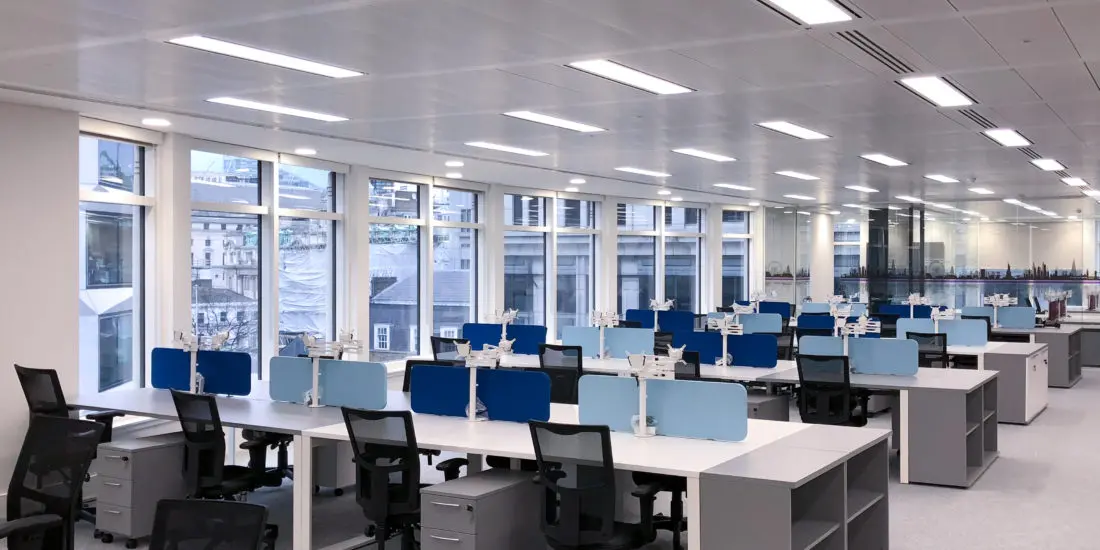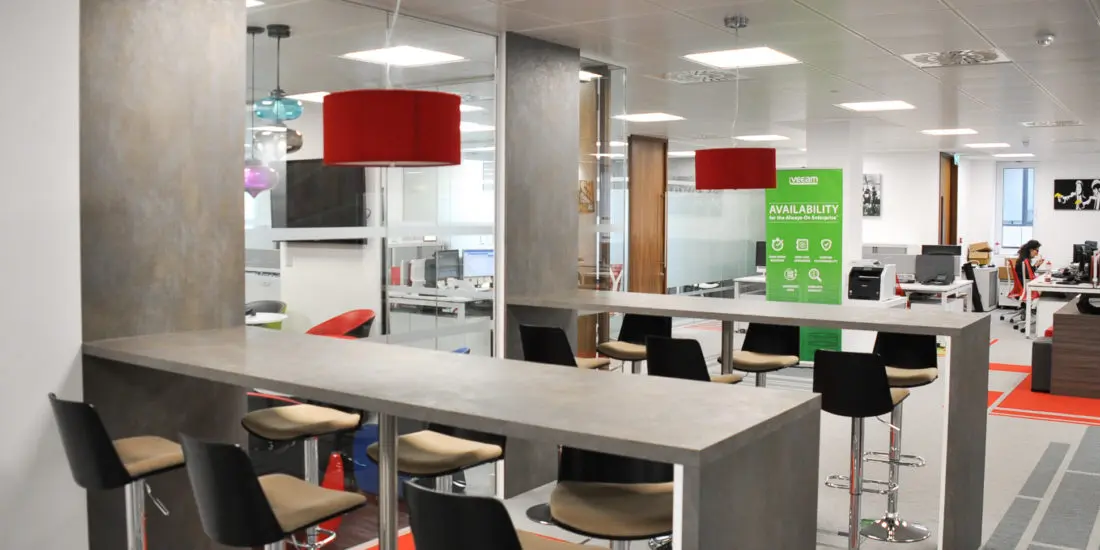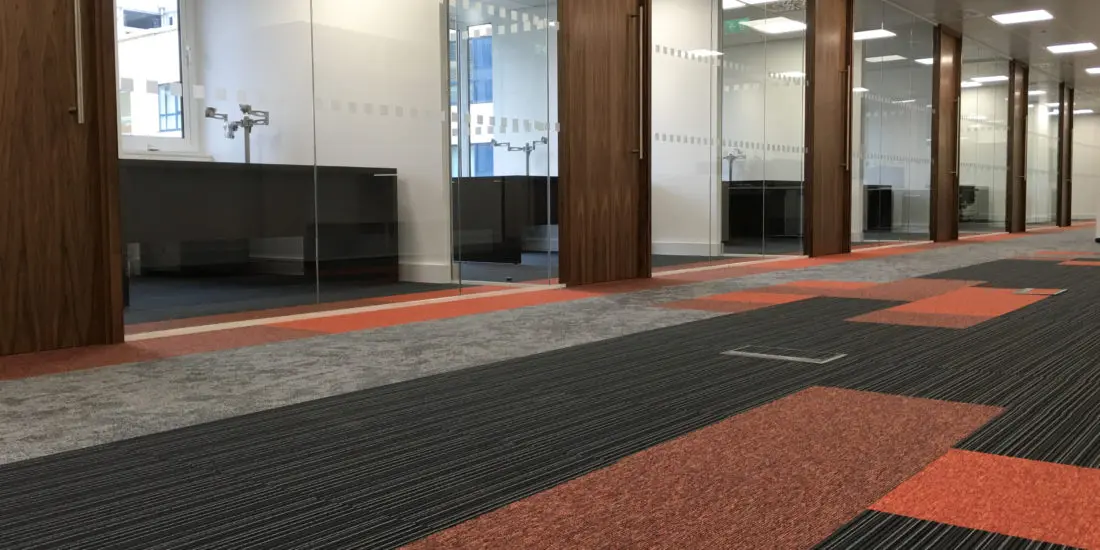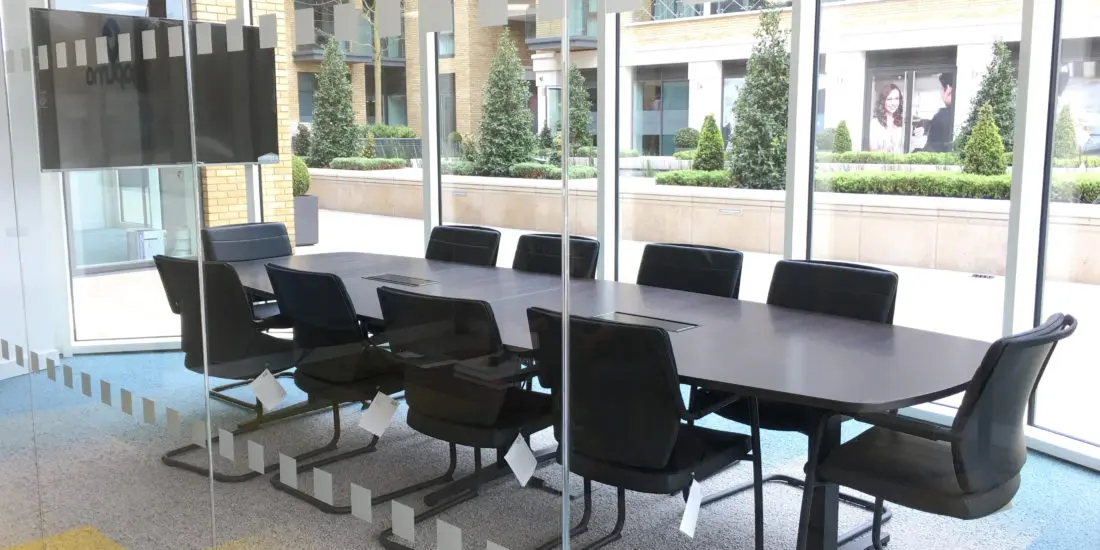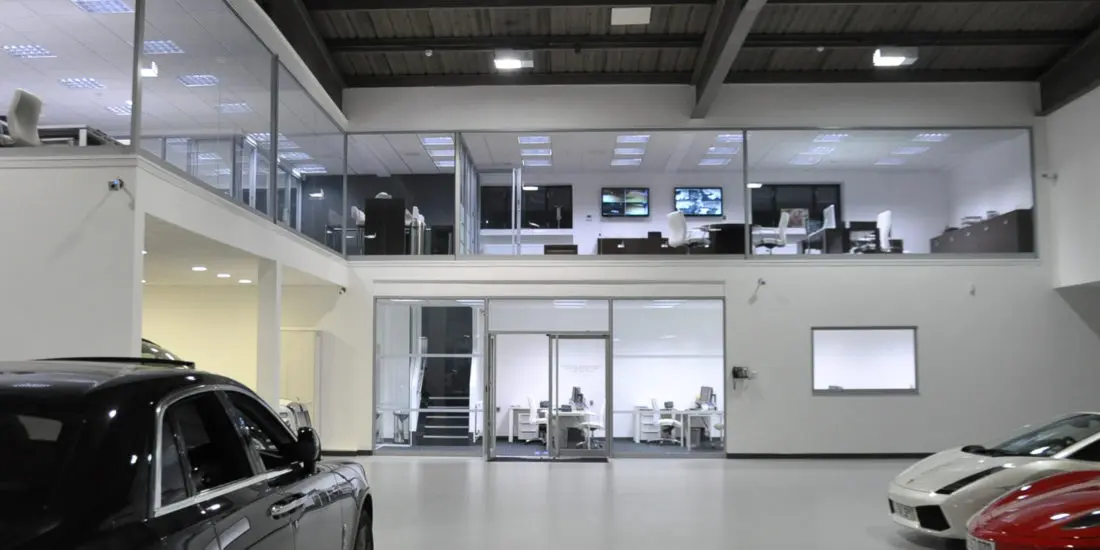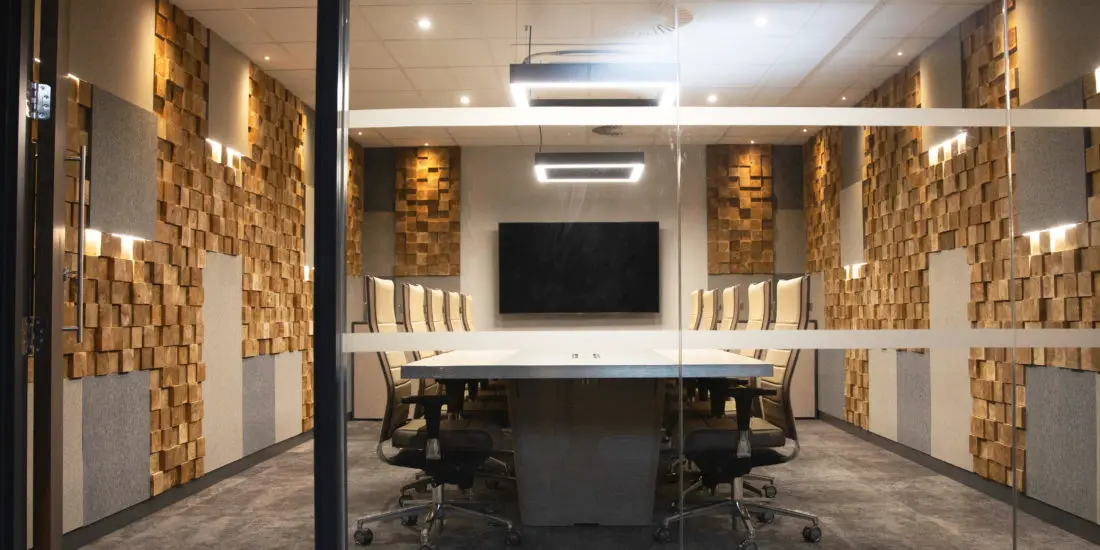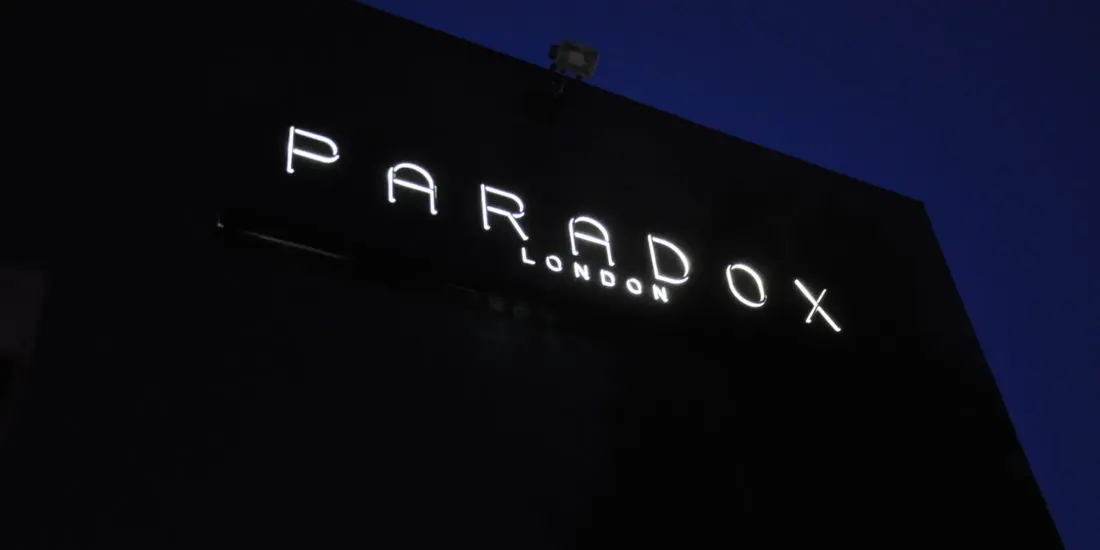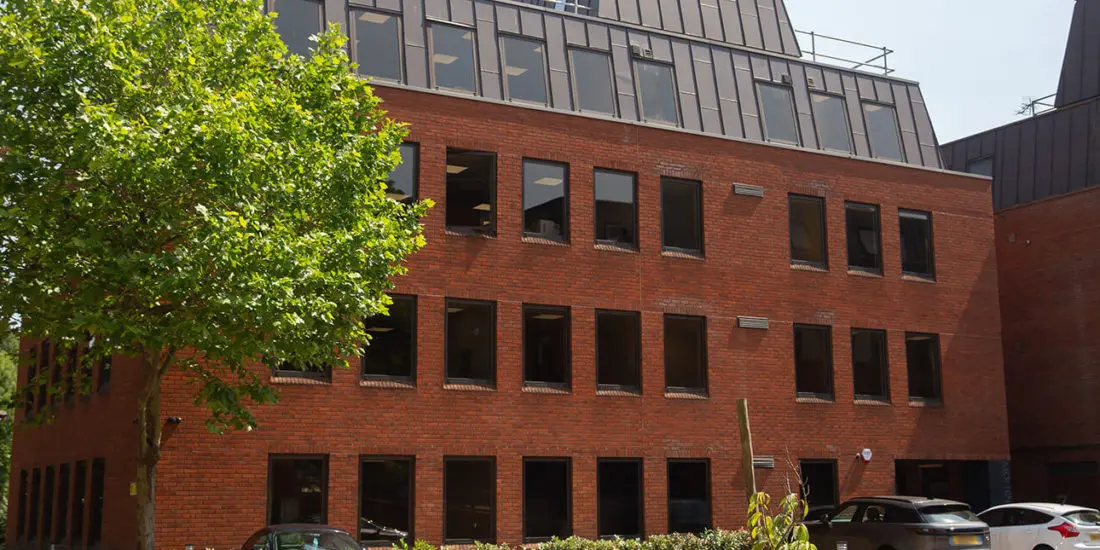Sustainable office fit-outs are revolutionising UK workplaces by combining environmental responsibility with employee well-being. These modern transformations deliver impressive results - a 15% increase in creativity and a 6% jump in productivity when incorporating biophilic elements. Smart energy systems, FSC-certified materials, and ergonomic designs create spaces that both nurture staff and protect our planet. With one in five millennials prioritising environmental values in their career choices, companies like ADT Workplace and White Arkitekter are in charge of innovative projects featuring living walls and state-of-the-art sustainable solutions. The future of UK offices holds endless possibilities for those ready to adopt the green revolution.
The Green Office Revolution
The alteration is especially evident in
adopting office biophilia, where the
integration of natural elements is revolutionising workplace interactions.
With studies showing a 15% increase in creativity and a 6% rise in
productivity, it's no wonder that
living walls and reclaimed materials are becoming as common in modern offices
as computers and coffee machines.
Smart companies are going all-in on green initiatives - take Interface's
"Mission Zero" project, which achieved the impressive feat of zero
negative environmental impact.
These sustainable spaces aren't just easy
on the planet; they're proving to be talent magnets too.
With one in five millennials ready to
pass on jobs that don't align with their environmental
values, going green isn't just good ethics - it's smart business.
Ergonomic furniture investments have become a
cornerstone of sustainable office design, promoting both employee wellbeing and
environmental responsibility.
Understanding Sustainable
Fit-Out Benefits
Breaking down the benefits of sustainable office fit-outs reveals a triple-bottom-line approach that
delivers environmental, economic, and social advantages. Through thoughtful
implementation of resource conservation
strategies and waste reduction
initiatives, organisations can create workspaces that benefit both the
planet and their bottom line.
The environmental impact speaks volumes -
from energy-efficient lighting systems
that slash carbon emissions to water-saving fixtures that preserve our precious
resources.
But let's talk money: these green
initiatives aren't just good for Mother Earth, they're fantastic for the wallet
too. Smart businesses are uncovering that sustainable fit-outs can greatly
reduce operational costs while
potentially qualifying for attractive tax
incentives and grants.
Perhaps the most persuasive advantage
lies in the human factor. Modern sustainable offices are becoming happiness
hubs, where natural light streams through windows and biophilic elements bring the outdoors in.
Employees thrive in these healthier
environments, breathing cleaner air thanks to low-emitting materials and
natural ventilation systems. The result? A more productive, engaged workforce that feels good about contributing to
a greater cause.
Research shows that top performers spend 45% of their time
collaborating in these well-designed sustainable spaces.
It's a win-win-win situation that's reshaping the modern workplace.

Key Materials for
Eco-Friendly Spaces
From sustainable
sourcing to circular economy
principles, selecting the right materials forms the cornerstone of eco-friendly office fit-outs. The
intelligent selection of resources reduces environmental impact and creates
healthier workspaces that inspire productivity.
Take bamboo,
for instance. This extraordinary material grows at lightning speed compared to
traditional timber and brings a touch of natural elegance to any office
setting.
Modern fit-out specialists increasingly
turn to reclaimed wood as a
breathtaking alternative to virgin timber. These materials tell a story through
their weathered character while preventing perfectly good resources from ending
up in landfills.
Paired with innovative solutions like FSC-certified products and recycled materials the possibilities
for sustainable design are endless. Steel and aluminium components add
industrial chic while being infinitely recyclable, making them smart choices
for structure and furniture.
Natural fabrics like wool and hemp are
making waves in office upholstery providing both style and sustainability. When
combined with low-VOC finishes and cork flooring, these materials create
spaces that are as healthy as they are environmentally conscious.
It's astonishing how the right material
choices can change an ordinary office into an eco-warrior's dream.
Click-lock technology makes modern laminated
flooring an increasingly popular choice for sustainable office spaces, offering
both easy installation and long-term durability.
Smart Energy Solutions
Implementing smart energy solutions stands at the forefront of sustainable office fit-outs, offering
innovative ways to reduce environmental
impact while maximising operational efficiency.
Modern smart technology has transformed
how businesses manage their energy
consumption. Innovative systems, such as window sensors and occupancy-detecting plug sockets, work
together to eliminate wasteful energy use.
At the heart of these solutions lies an interconnected ecosystem of devices
that communicate seamlessly with each other. The impressive results speak for
themselves - just look at how the TED system has transformed over 60 HMO
properties, dramatically reducing their energy
usage.
Professional installation teams guarantee
these smart systems are perfectly calibrated, taking the headache out of energy
management while providing optimal
performance.
The real breakthrough is how these
solutions adjust to actual space usage. Imagine lights that know when to switch
off in empty rooms and heating systems that power down when windows are left
open.
It's not just about cutting bills -
though that's undoubtedly a welcome bonus. These smart energy solutions
represent a perfect fusion of efficiency
and sustainability, proving that going green doesn't mean sacrificing
comfort or convenience.
Through space utilisation analysis, organisations can identify opportunities to optimise their energy consumption patterns through space utilisation analysis while maintaining operational efficiency.

Employee Wellness Through
Design
Beyond smart energy systems, the modern
office environment recognises that employee
wellness is a cornerstone of sustainable
design. Through mindful design choices, organisations create spaces that
nurture physical and mental well-being while enhancing productivity and
creativity.
Integrating biophilic elements stands at the forefront of workspace aesthetics,
with studies showing they can elevate creative thinking by up to 15%. Natural light plays a particularly
fascinating role - employees working near windows typically enjoy 46 minutes
more sleep at night than their windowless counterparts.
Smart office layouts now feature
dedicated wellness zones where staff
can decompress, meditate, or simply catch their breath during hectic workdays.
Ergonomic considerations have become
non-negotiable in contemporary office design. Standing desks and adjustable workstations aren't just trendy
additions - they're essential tools for preventing workplace injuries and
maintaining employee health.
The thoughtful combination of quiet zones for focused work and
collaborative spaces for team interaction creates an environment where
employees can flourish. Local art
installations and cultural elements add the finishing touch, converting
sterile office spaces into lively communities that celebrate both wellness and
heritage.
Professional design expertise ensures optimal
space utilisation while complying with workplace regulations and safety
standards.
Cost Analysis and ROI
When organisations consider sustainable office fit-outs,
understanding the extensive cost
structure becomes paramount for informed decision-making. Basic fit-out costs typically range
from £300 to £1,600 per square metre, with design
complexity significantly influencing the final price tag.
While sustainability features might raise
initial cost implications, they're proving to be a smart investment that pays
dividends in the long run.
The investment
returns on sustainable office fit-outs are increasingly persuasive. Energy-efficient systems slash utility
bills, while sustainable materials reduce waste disposal costs. Smart
organisations are capitalising on government
incentives - those lovely tax credits and grants that make going green even
more attractive.
Let's remember the enhancement in property value; sustainable buildings
are hot commodities in today's market.
The numbers tell an impressive story
through sophisticated tracking systems and workplace analytics platforms.
Companies can monitor their ROI through energy consumption patterns,
maintenance cost reductions, and improved employee productivity metrics.
While the upfront costs might make some
executives break into a sweat, the long-term
savings and benefits make sustainable fit-outs a no-brainer for
forward-thinking businesses.
Biophilic design elements are increasingly being incorporated into sustainable office fit-outs to improve employee well-being and productivity.

UK Success Stories
Changing the UK office environment,
several pioneering companies have demonstrated exceptional success in sustainable fit-outs.
ADT Workplace's award-winning project for
x+why Manchester showcases how sustainable design can merge with workplace innovation to create spaces
that cater to diverse sensory needs while maintaining environmental excellence.
White Arkitekter proved that
sustainability can drive cost savings,
slashing their project budget by an impressive 40% through clever material
reuse.
The Eden Office Block in Salford stands as a proof of modern office innovation with its revolutionary features:
- UK's largest living wall powered by rainwater harvesting
- Passivhaus-inspired insulation and climate control systems
- Mandatory green leases for all tenants
- Repurposed building materials reducing embodied carbon
- NABERS UK 5.5-star rating target
These success stories highlight the
change happening across the UK's commercial real estate sector.
While only 28% of office stock currently
holds environmental certifications,
the growing demand for sustainable
workspaces is driving change.
From BREEAM excellence to circular
economy principles, these pioneering projects prove that sustainable design
isn't just good for the planet - it's smart
business, too.
Employee satisfaction has become a key driver in modern office refurbishments, with businesses recognising that well-designed spaces directly impact workplace productivity.

Planning Your Sustainable
Office
Successfully planning a sustainable office fit-out requires
careful consideration of multiple interconnected factors, from material
selection to energy efficiency measures. The process begins with a thorough space audit to identify opportunities
for eco-friendly layouts that
maximise natural light and enhance workspace utilisation.
When developing your sustainable office
plan, prioritise the integration of renewable
and recycled materials in both construction and sustainable furniture
choices. Smart building systems can
be seamlessly woven into the design, controlling everything from HVAC to
lighting based on actual usage patterns.
Fire-rated partitions are essential components
in modern sustainable offices, offering protection ratings of up to 120 minutes
while maintaining aesthetic appeal.
It's astonishing how today's modular furniture solutions can modify
to changing needs while maintaining a minimal environmental footprint.
Don't forget the power of biophilic design elements - those
gorgeous living walls and strategically placed plants aren't just
Instagram-worthy office features. They're hard-working air purifiers that
elevate employee wellbeing and
productivity.
Partner with designers specialising in sustainable design to guarantee your
vision aligns with environmental best practices and practical workplace needs. The key is creating a space that's kind
to the planet and supports your team's success.
After all, a well-planned sustainable
office isn't just about ticking green boxes - it's about creating a workplace
that works better for everyone.
Future-Ready Workplace Trends
The future of workplace design lies at the intersection of technological innovation and sustainability. As organisations adopt
flexible workspaces and remote collaboration tools, we're
witnessing a dramatic shift in how modern offices function.
Data-driven decision-making and AI-powered solutions are
revolutionising everything from employee
development to space utilisation.
Today's forward-thinking companies are implementing these game-changing workplace trends:
- Integration of smart technology for seamless remote team collaboration
- Flexible work arrangements that enhance both productivity and employee satisfaction
- AI-driven learning platforms that create tailored development paths
- Data analytics for optimising workspace utilisation and employee engagement
- Sustainable design elements that reduce environmental impact while enhancing wellbeing
The workplace of tomorrow is taking shape
right before our eyes, and it's nothing short of extraordinary.
With 50% of businesses already adopting
flexible working as standard practice, we're seeing a beautiful fusion of
digital innovation and environmental consciousness.
Organisations that adopt these trends
aren't just preparing for the future - they're actively shaping it through
thoughtful integration of technology, sustainability, and human-centred design principles.
Strategic office space zoning enables companies to create distinct areas for focused work, collaboration, and relaxation, maximising employee productivity and satisfaction.

Conclusion
The sustainable office movement in the UK blazes a trail like a green guide, illuminating the path toward a carbon-neutral future. From recycled materials to smart energy systems, modern workplaces have evolved into living ecosystems that nurture both environmental responsibility and human well-being. As businesses continue to adopt these groundbreaking practices, sustainable office fit-outs stand as towering trees in an urban forest, their roots deeply embedded in corporate responsibility and their branches reaching toward tomorrow's possibilities.







